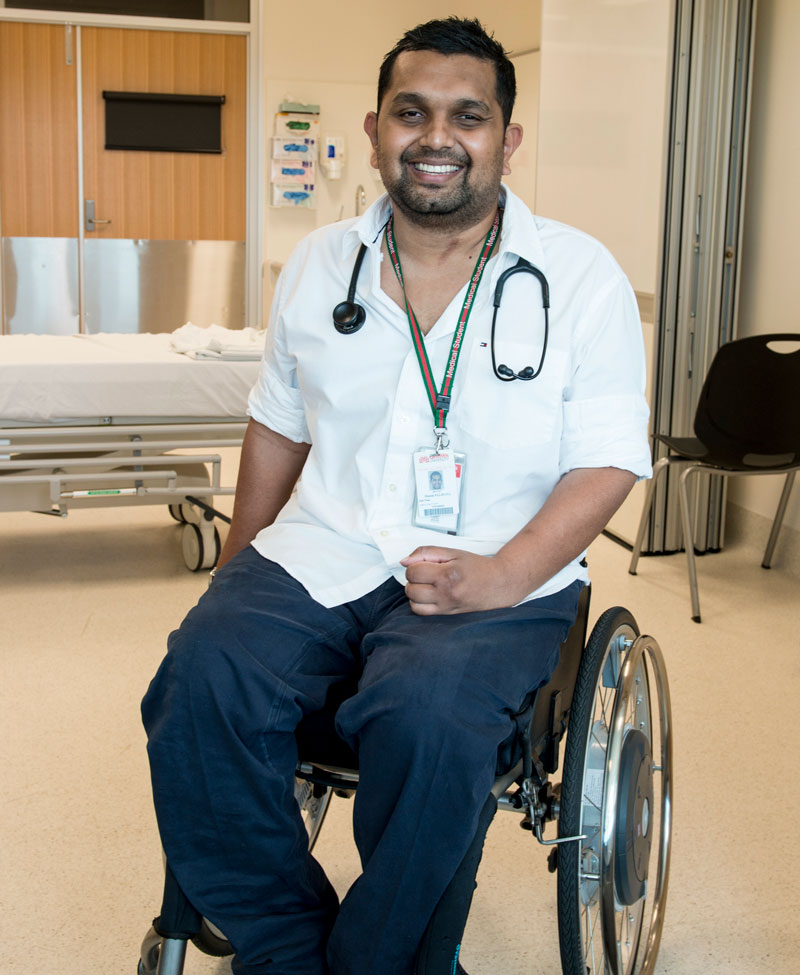Spinal cord research offering hope for the paralysed is set to get underway on the Gold Coast at Griffith University in collaboration with Harvard University.
The move will be highlighted by Harvard faculty member scientist Dr Yang D. Teng, who will be speaking at Griffith on 7 November at the ‘Curing Paralysis’ public lecture series.
A global expert in spinal cord research, Dr Teng will speak about the promising results he and colleagues are seeing with stem cell-based multimodal research that he’s leading and the spinal cord projects he’s currently developing for collaboration with the University of Technology, Sydney (UTS) and Hunter Medical Research Institute, NSW, Australia.
“Our research focuses on obtaining functional recovery after spinal cord injury and takes an integrated approach that involves stem cells, biomaterials, and pharmacological compounds to induce neural network repair and activation.
“Such strategies have shown encouraging results,” says Dr Teng. “We have already seen some clinical translation of this research approach, with the FDA approval for the first neural scaffold as an implantable therapeutic device for clinical trial to treat acute spinal cord injury.
“We are now looking to investigate results that can help produce the next generation of this implantable device.”
Dr Teng will also highlight other exciting approaches from the US such as using electrical neuromodulation, drug therapies and locomotor technologies that have allowed paralysed patients to feel, stand and voluntarilymove their legs.
Importantly, the data Dr Teng will present will enable new therapy development.
Among leading peers, Duke University also made headlines recently by restoring movement in the paralysed using virtual reality walking. At Spaulding Rehabilitation Hospital, Harvard University’s PM&R teaching institution, impressive progress has been made for enhancing motor function and reducing complications for people with chronic spinal cord injury disabilities through its NIH-funded Clinical SCI Model System.
Using these new treatment methods, an impressive number of documented patients have recovered levels of voluntary movement, sensation and associated health benefits.
“These scientific progresses have shown very promising therapeutic benefits for spinal cord patients, and our goal is to push forward to devise more powerful treatments for spinal cord injury over the next few years,” says Dr Teng.
Clinical trials designed to build on this work will begin soon at Griffith’s Menzies Health Institute Queensland, and will take a multi-disciplinary approach with new approaches offering hope for the paralysed to move again. The trials will complement Griffith’s existing stem cell research led by Dr James St. John from Griffith’s Eskitis Institute, with the support of the Perry Cross Spinal Research Foundation.
“I am very enthusiastic for this research to be embraced at Griffith and also for increasing the public’s awareness of the impactful consequences of spinal cord injury. However, this is a complex clinical condition and we need to remain open-minded to the need for a thorough dialogue across all relevant clinical disciplines in order to most effectively proceed,” says Dr Teng.
“We are delighted to be hosting Dr Teng in raising awareness of this important clinical area and are excited to be at the forefront of spinal cord research here on the Gold Coast,” says Professor Harry McConnell who is spearheading the initiative at Griffith University. “There is tremendous promise in stem cells and other techniques exploiting the plastic nature of the central nervous system in spinal cord injury.
“We currently have around 15,000 Australians living with spinal cord injury. Unfortunately people tend to oversimplify the treatment and think that it’s just about getting away from using a wheelchair. In reality spinal cord injury can cause challenging issues that can affect many systems of the body eg. gastro, heat regulation, as well as issues concerning chronic pain and mental health.
“To date, there have been many advances in spinal cord research using techniques from many different disciplines such as exercise science and pharmacology. Griffith will be taking advantage of the wide range of research expertise it has in these and other disciplines.
“We are preparing now to undertake a range of cross-disciplinary work and clinical research trials which will provide for a fantastic collaboration between Griffith and Harvard Universities.”
EVENT DETAILS:
Date: Monday, 7 November 2016
Location: G42 2.17 at Griffith University, Gold Coast campus
Time: 5.30pm arrival for 6.00pm start
Web link: https://www.facebook.com/events/1316888118322455/
* Dr Teng is Associate Professor of Physical Medicine & Rehabilitation and Neurosurgery at Harvard Medical School. He studies recovery neurobiology and functional multipotency of stem cells through understanding intra-spinal cord neural circuitry reorganisation and molecular mechanisms that underlie stem cell based multimodal strategy to treat spinal cord injury (SCI), stroke, traumatic brain injury and neural degenerative diseases.
